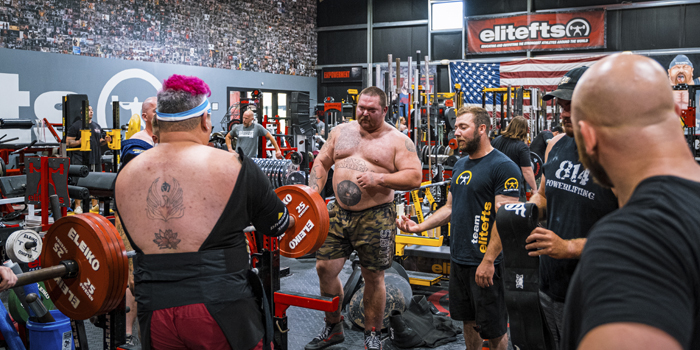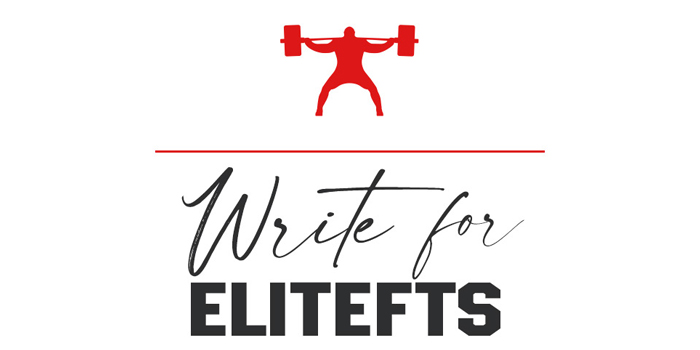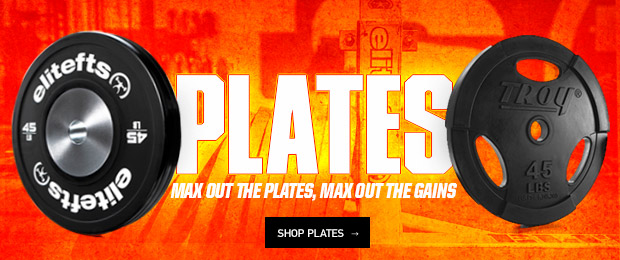
As an equipped lifter, one of the main questions asked during training sessions is, “When should I put on my gear?” The answer to that is, as with all things strength and conditioning or strength training, “It depends.” While this may seem like a nebulous response that does not provide much in the way of guidance or advice, my hope is that the following suggestions do an adequate job of providing some sort of guidance for both new and experienced equipped lifters.
It should be stated that what follows below is simply my personal opinion and the results of my own training. This is not hard and fast factual or statistical data stemming from any form of study or inquiry. It is just my own interpretation of what I have seen and experienced. While I intend to present this information as succinctly and intelligently as possible, take it with a grain of salt and a critical mind. What works for me and my crew might not work for you and yours, so do with this what you will.
What is Equipped Gear?
Let’s explore what gear is, and how it works, a little deeper before moving on to the meat of the article: gear. Gear such as bench shirts, briefs, suits, and wraps act to support joints and soft tissues through compression, while also allowing the lifter to move extremely heavy weight. However, while gear is a supportive mechanism, and the addition of gear to a lifter’s arsenal/toolkit is typically a positive event, it (gear) does add an additional layer of complexity to a given lift.
Not only does the lifter have to be strong enough to support and move the weight loaded on the bar, but he or she must also be strong enough to manipulate the gear and force it to work in coordination with movement rather than in opposition. Gear is inherently inert, meaning that it, in and of itself, does nothing when at rest, and per Newton’s 1st Law (the Law of Inertia), an object at rest will remain at rest unless acted upon by an external force. However, by manipulating the gear, a lifter alters the state of the material, stretching and/or expanding the fibers of the material, which provides support. The material will always “want” to return to its natural state of rest (via contraction of the fibers), which then provides “pop.”
Gear Materials
Different materials have different characteristics, such as poly versus canvas, and are more appropriately suited to particular situations or lifts. As an example, canvas is very stiff and hard to stretch, making it ideal for providing maximal support in a squat, but relatively inappropriate for a bench press due to that same stiff and inelastic nature. Whereas a poly material, which is more easily manipulated and stretched, is better suited for a deadlift or a bench press because it is “easier” (relatively speaking) to use and provides more pop.
Much of a lifter’s career can be spent figuring out which gear is most appropriate (poly briefs with a canvas squat suit, suit only for deadlifts, or a scooped or straight collar for bench press) for his or her particular skill set, needs, abilities, and build. And that’s where things start to get fun but also expensive. I have worn four or five different bench shirts, three squat suits, and four deadlift suits, as well as three different pairs of briefs.
When Do We Wear Gear?
But when do we put on the gear? Well, again, it depends. First, ask yourself some of the following questions:
- What is the goal of the training session?
- Where am I in my training cycle?
- What is my relative experience level as a lifter, both raw and equipped?
- Do I have adequate personnel/assistance to help me get into and (more importantly!) out of the gear?
- How much fatigue am I looking to introduce relative to the level of intensity I’m training at?
There are no hard and fast solutions to any of the above questions, so I will not try to answer them, but they are good food for thought questions that can help determine when to put on your gear.
While there may not be any “right” answers to these, and other, questions, I do believe there are some relative guidelines that lifters can operate by to most effectively apply gear to their training.
Recent: Stretching Suits and Shirts How-To
Max Effort Training
- When training for a maximal attempt (Max Effort Lower or Upper), gear should be applied as early as possible to mitigate the level of systemic fatigue experienced or introduced before reaching a maximal attempt. In other words, put the gear on early enough so that you do not burn yourself out before reaching your maximum attempt.
- Sample 1,000-pound squat attempt warm-up (65-pound bar):
- Raw: bar/1/2/3 plates
- Briefs: 4/5/6 plates
- Suit straps down: 7/8/9 plates
- Sample 1,000-pound squat attempt warm-up (65-pound bar):
- Suit straps up + wraps: 10/10.5 plates
This example scheme allows for adequate raw CNS/muscular activation/warm-up before moving into “heavier” weights in briefs, then the suit, then a full kit with wraps. The level of support for each tier (meaning the amount of gear worn) matches up relatively well with the intensity of each attempt. In other words, those attempts that can be executed raw are done so, whereas those attempts that (to minimize overall fatigue) require support are done in gear.
Dynamic Effort Training
2. When training for Dynamic Effort (squat or deadlift), gear should be kept at a minimum to minimize support (most DE weights do not require a surplus of gear to move effectively), and should only be applied when necessary.
- Sample DE Lower session for a 1,000-pound squatter (vs 25% band tension)
- Raw: bar/1/2/3 plates
- Briefs: 4/5 plates
DE work is more about (in my opinion) building speed, explosiveness, and technical proficiency than weight, and as such, the bulk of the work should be done by the lifter and not the gear. That is not to say that for ME sessions the gear does all the work, but it definitely creates an advantageous scenario, which is the desired outcome. DE work is NOT ME work and should be treated as such when it comes to applying gear.
Technical Proficiency Training
3. When training for technical proficiency, breaking in gear, or introducing gear to a novice lifter, gear should be applied as early as possible, before even reaching weights that might otherwise dictate the application of gear. The goal of these scenarios is not weight, speed, or fatigue adaptation, but rather time/reps in the gear to learn, groove, or break in the equipment. Now, what those specific weights are is going to be dictated by the strength of the lifter, meaning that a stronger lifter might put on the gear later than a weaker lifter, but regardless, gear should be applied prior to it needing to be applied.
- Sample introductory session for a 500-pound raw squatter
- Raw: bar/1/2/2.5 plates
- Briefs: 3/4/5 plus plates
- Sample brief break-in session for a 1,000-pound geared squatter
- Raw: bar/1/2/3 plates
- Briefs: 4/5/6 plus plates
Conclusion
The whole intent of all of the above scenarios is to avoid the accumulation of excess or unnecessary fatigue before reaching the intended training effect. Gear is supportive, but again, creates additional fatigue via the need to manipulate it effectively. Application of gear is not a precise science and is mostly a personal preference, but by asking yourself the questions posted above, and by examining the needs and goals of any given training session, you can perhaps more effectively choose when and how to apply your gear.
Jim Seratt is a Tactical Strength and Conditioning Coach with the US Army. He has 10 plus years of coaching experience, is an equipped powerlifter in the 242/275 pound weight classes, writer, podcaster, and flannel enthusiast. He can be reached at jseratt.cscs@gmail.com or via Instagram @jimberjacked










